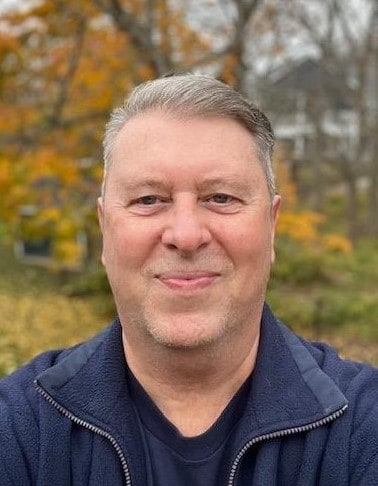In December 2020, I came in from an hour of shoveling snow. It was a frigid, cold night and as I changed my clothes, I noticed that my left nipple was erect, but my right nipple was flat and slightly inverted. I thought this was quite strange indeed. I touched it, caressed it, and even put ice against it, but it never moved … ever again!
I was extremely bothered by all of this and could not concentrate on my television show, so I went on the computer and searched “What would cause a flat or inverted nipple?” The site I chose listed a number of possibilities for this, including breast cancer. I then searched for symptoms of male breast cancer and found several sites that all basically listed the same information.
As I closed down my computer later that night, I already knew several things. My body was speaking to me, showing me that there was something abnormal happening in my right breast area. I now knew I had to be vigilant and monitor any additional changes there, and seek medical attention if things escalated, which would be hard while in the midst of the Covid 19 pandemic.
As I sat there quietly thinking, the most difficult reality I had to face that night was the realization that, as a male, I likely had cancer growing in my right breast tissue and soon a diagnosis might follow, and my life could possibly change forever … and it did!
Over time, one by one, the list of symptoms I had read about on the computer, began to appear. My nipple was often red and swollen. There was a burning pain if I touched my breast area. At first, that pain was only apparent on direct contact, but later it ached all the time.
Then, in mid-April while showering one morning, I found a lump. It was a soft, fleshy lump about the size of my thumb pad. It was movable and did not hurt to touch. I called my doctor’s office and the receptionist asked if the lump was “small, hard, and about the size of a pea?” I describe my lump very differently, and she assured me that my doctor would definitely want to see me as soon as possible.
After the call ended, I went into my bathroom, removed my shirt and felt that lump once more. I began to move my hand around the circumference of the nipple area, digging in while doing so. And then I found it. It was a second lump…a small, hard, pea-size lump!
I looked in the mirror and said, “You have breast cancer…now, how are you going to handle that?”
In May 2021, after a week of doctor visits, a mammogram, an ultra-sound, a biopsy, and a great deal of pain and emotional turmoil, my family doctor called with bad news. He told me I had been diagnosed with Invasive Ductal Carcinoma in my right breast. In my heart, I already knew I had breast cancer, but the diagnosis confirmed it officially and that realization was a shock.
All I could hear was the word “Invasive” and it seemed like an explosion in my head. I could feel my heart pounding in my ear. Did it mean my body was completely invaded by cancer? I was stunned and I was emotionally exhausted. I found out then, that medical terminology is often very frightening, unnecessarily so, if you ask me. It did not mean what I thought it meant. Cancer had not invaded my body. As it turned out it was localized in that one spot and for that I am very grateful.
I met, almost immediately, with my surgeon Dr. David Bottoni at the St. Thomas Elgin General Hospital (STEGH), and in June 2021, he performed a complete mastectomy of my right breast, and cured me of the stage one cancer there.
In July 2021, after consultation with my oncologist Dr. Veera Panuganty, as a preventative measure, I began three months of intensive chemotherapy at the local cancer clinic.
In October 2021, I created “The Bottoni Project” with goals to support male breast cancer awareness initiatives in Canada.
It is very important for me to help Canadian men understand that we have breasts too and are therefore at risk for this very rare form of breast cancer that will kill 55 of the 270 men diagnosed with it, this year alone.
“The Bottoni Project” is also intended to help derail the shame, stigma, and the silence that prevents men from a healthy social and emotional recovery from male breast cancer. This failing is often rooted in the lack of awareness, attention, understanding, and support of this disease within our healthcare system, the corporate sector, and in communities across our country.
Lastly, it is our hope that the introduction of the blue and pink male breast cancer ribbon will help give this disease its own identity and can be used as symbol to promote the awareness of male breast cancer for men everywhere in Canada.
“The Bottoni Project” is named in honor of my surgeon Dr. David Bottoni whose kindness, positivity, encouragement, advocacy and extraordinary surgical skills saved my life. Dr. Bottoni is also a metaphor for all the amazing health care providers, care givers, support workers, clerical staff and volunteers who stood beside me in my sickness and recovery.
To each of them too, I give sincere thanks and gratitude from the depths of my heart for where I am today!
For more information on “The Bottoni Project”, including video interviews, please click on this link: https://steghfoundation.akaraisin.com/ui/BottoniProject
To contact me directly, please email: thebottoniproject@rogers.com

